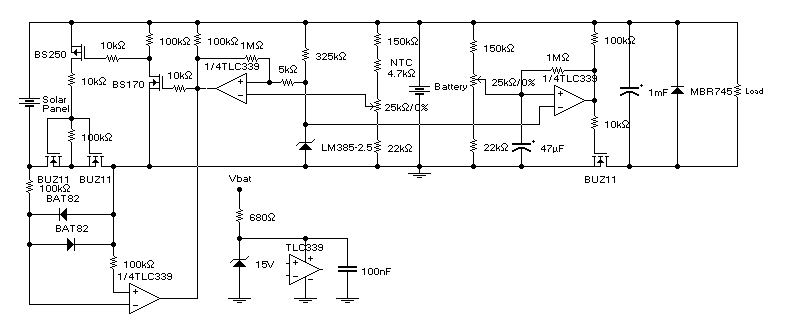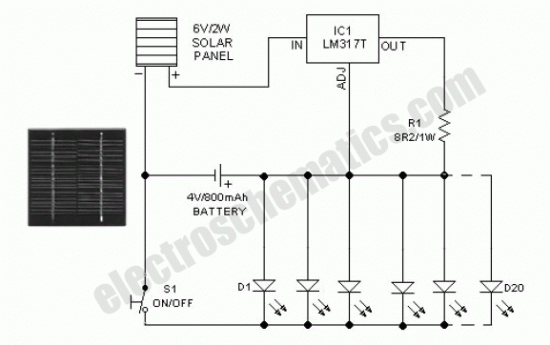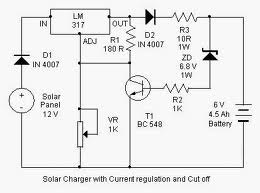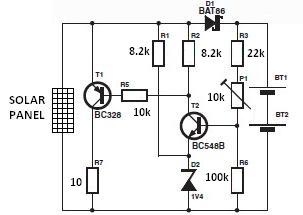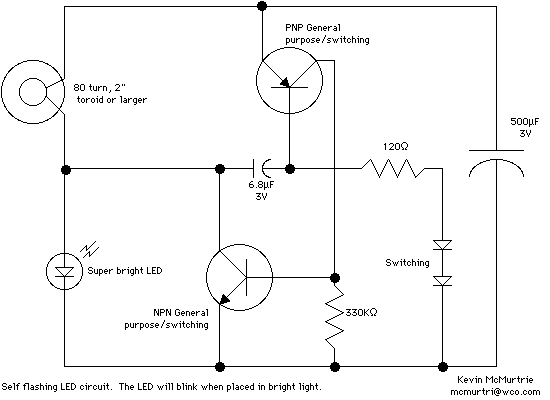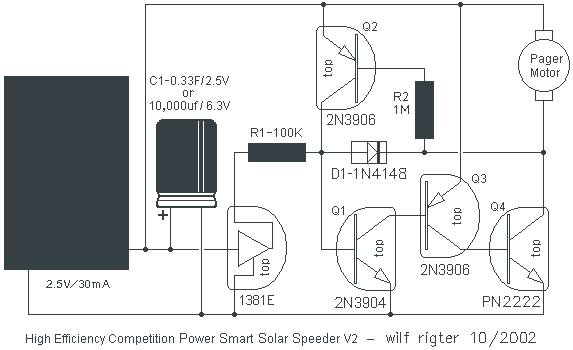
The 1381-based solar engine
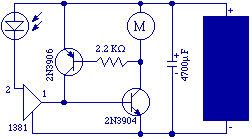
The 1381 solar engine uses a 1381 voltage detector (a.k.a., a voltage supervisor) IC to drive a voltage-based (type 1) solar engine. The 1381 is normally used to reset CPUs and micros when the power supply drops too low for reliable operation. So 1381s detect and switch when the input voltage crosses the rated upper and lower threshold voltages. The upper and lower switching voltages are slightly overlapped so that the turn-on voltage is a few hundred mV above the turn-off voltage.
The 1381 voltage supervisor is a critical component in solar energy applications, particularly in systems where maintaining stable voltage levels is essential for the operation of sensitive electronic devices. The IC operates by monitoring the input voltage and providing outputs that can control other components in the circuit, ensuring that the voltage levels remain within specified thresholds.
In a typical application, the 1381 is connected to a solar panel that charges a storage battery. The output of the 1381 can be used to enable or disable a load based on the battery voltage. When the voltage exceeds the upper threshold, the 1381 activates the output, allowing current to flow to the load. Conversely, if the voltage drops below the lower threshold, the output is deactivated to prevent under-voltage conditions that could damage the connected load or the battery itself.
The design of the circuit must account for the specific threshold settings of the 1381, which can be adjusted using external resistors. This flexibility allows designers to tailor the voltage levels to the requirements of the application. Additionally, incorporating bypass capacitors near the IC can help stabilize the voltage readings and improve response times.
Overall, the 1381 solar engine circuit exemplifies a robust solution for managing power in solar energy systems, ensuring that devices operate reliably within their voltage specifications while maximizing the efficiency of solar energy utilization.The 1381 solar engine uses a 1381* voltage detector (a.k.a., a voltage supervisor) IC to drive a voltage-based (type 1) solar engine. The 1381 is normally used to reset CPUs and Micros when the power supply drops too low for reliable operation.
So 1381s detect and switch when the input voltage crosses the rated upper and lower threshold voltages. The upper- and lower-switching voltages are slightly overlapped so that the turn-on voltage is a few hundred mV above the turn-off voltage.
🔗 External reference
The 1381 voltage supervisor is a critical component in solar energy applications, particularly in systems where maintaining stable voltage levels is essential for the operation of sensitive electronic devices. The IC operates by monitoring the input voltage and providing outputs that can control other components in the circuit, ensuring that the voltage levels remain within specified thresholds.
In a typical application, the 1381 is connected to a solar panel that charges a storage battery. The output of the 1381 can be used to enable or disable a load based on the battery voltage. When the voltage exceeds the upper threshold, the 1381 activates the output, allowing current to flow to the load. Conversely, if the voltage drops below the lower threshold, the output is deactivated to prevent under-voltage conditions that could damage the connected load or the battery itself.
The design of the circuit must account for the specific threshold settings of the 1381, which can be adjusted using external resistors. This flexibility allows designers to tailor the voltage levels to the requirements of the application. Additionally, incorporating bypass capacitors near the IC can help stabilize the voltage readings and improve response times.
Overall, the 1381 solar engine circuit exemplifies a robust solution for managing power in solar energy systems, ensuring that devices operate reliably within their voltage specifications while maximizing the efficiency of solar energy utilization.The 1381 solar engine uses a 1381* voltage detector (a.k.a., a voltage supervisor) IC to drive a voltage-based (type 1) solar engine. The 1381 is normally used to reset CPUs and Micros when the power supply drops too low for reliable operation.
So 1381s detect and switch when the input voltage crosses the rated upper and lower threshold voltages. The upper- and lower-switching voltages are slightly overlapped so that the turn-on voltage is a few hundred mV above the turn-off voltage.
🔗 External reference
